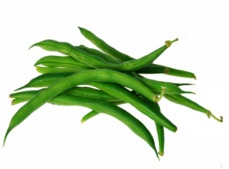Beans

There are many different genera and varieties of beans, almost all of which originated in the Americas. It seems there were at least two different areas where they were first domesticated; one in Central and the other in South America. Despite its French name, the haricot bean was most likely only introduced into Europe in the fifteenth century and the kidney bean came from Peru. The exception is the broad or fava bean, which came originally from North Africa and southwest Asia.
Like peas, all beans are legumes and have the ability to fix atmospheric nitrogen with the aid of N-fixing bacteria, making them potentially a low-input, environmentally friendly break crop in a cereal rotation. In future there may be a premium if beans destined for human consumption can be shown to have a higher level of desirable nutrients. This will be unlikely to apply to commodity crops, most of which find their way into animal feed. At harvest the plant remains can be chopped and later ploughed in to recover as much nitrogen as possible. Bean straw is highly calorific and some can also be used in straw-burning boiler and central heating systems in rural areas.
Again like peas, beans are rich in protein and a wide range of minerals and vitamins. Baked beans on toast come close to providing a complete and cheap meal, much favoured by university students. Ironically, the UK recipe for Heinz baked beans contains only half the sugar of the US version and is now re-exported to the USA as a healthier version.
The Dressing Process
Field Science tailored mineral dressings are always based on detailed soil analysis of the field to be treated. A member of our technical team will visit your farm to discuss and identify where we can help. Soil samples are then taken and the tailored dressings are based on the independent laboratory’s results.
The Single Crop Dressing is the best option for beans as the soil is usually ploughed after harvest and that would effectively bury a multi-year dressing out of reach of the roots.
The best time for application is just after emergence and the application rate is usually 25kg per hectare (10kg/ac) and the most effective method of application is to use an electric spinner (slug-pelleter) on a quad bike. The dressings are packed in 25kg bags, clearly labelled with the farm details, field name, application rate and bag weight.
